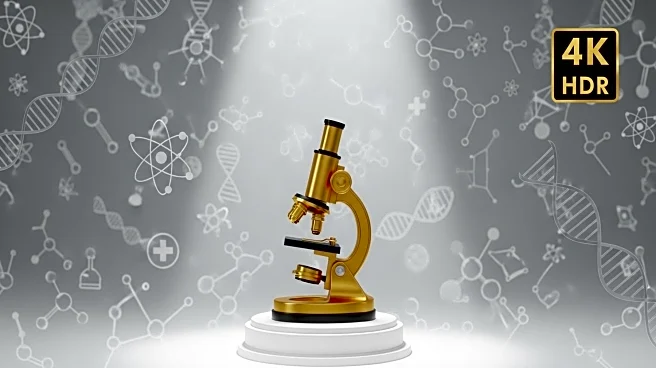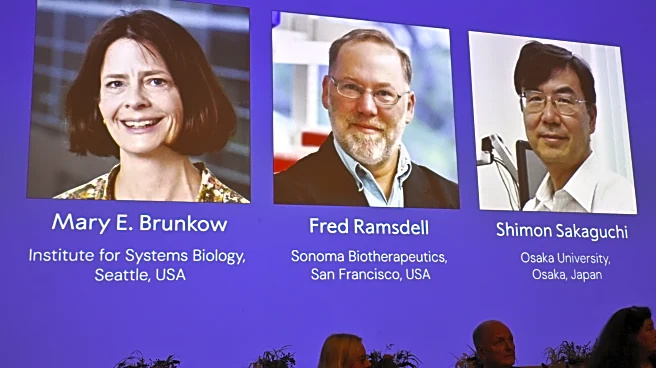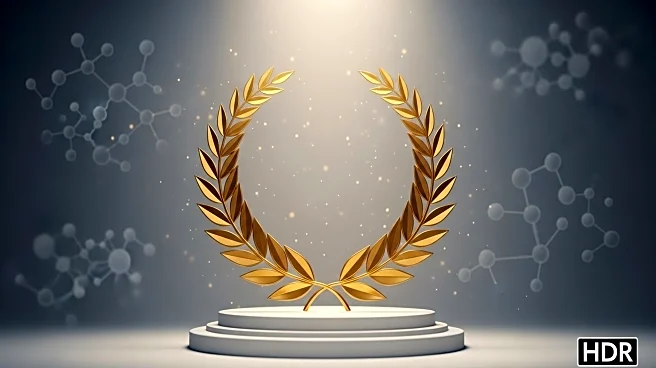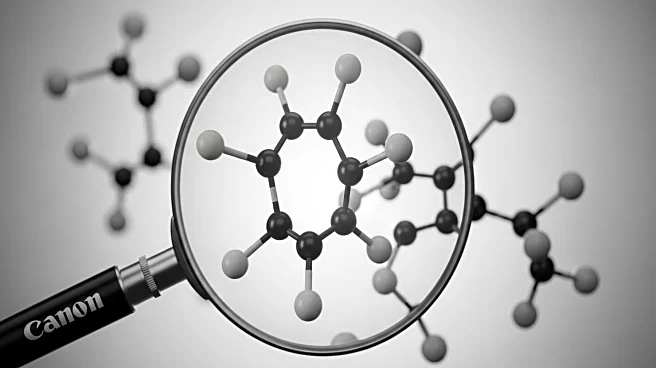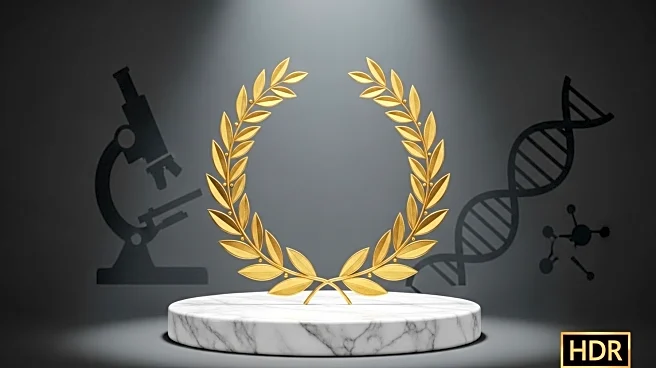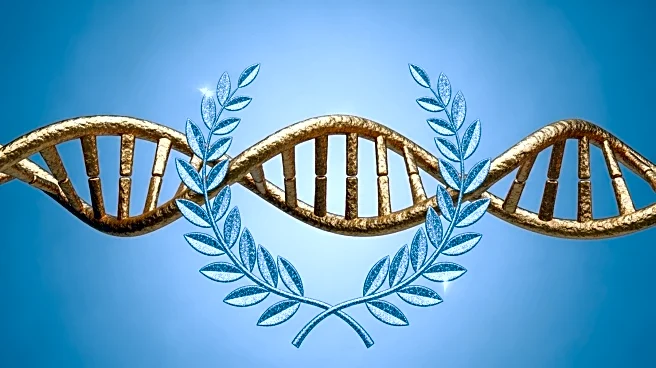What is the story about?
What's Happening?
Mary E. Brunkow, Fred Ramsdell, and Dr. Shimon Sakaguchi have been awarded the Nobel Prize in medicine for their groundbreaking discoveries related to peripheral immune tolerance. Brunkow and Ramsdell, both 64, are affiliated with the Institute for Systems Biology in Seattle and Sonoma Biotherapeutics in San Francisco, respectively. Sakaguchi, 74, is a distinguished professor at Osaka University in Japan. Their research has significantly advanced the understanding of the immune system, particularly the role of regulatory T cells, known as T-regs, in maintaining immune balance and preventing autoimmune diseases. The Nobel Assembly highlighted that their work has opened new avenues for medical treatments targeting cancer and autoimmune diseases, with several therapies currently undergoing clinical trials.
Why It's Important?
The recognition of Brunkow, Ramsdell, and Sakaguchi's work underscores the critical importance of understanding immune system mechanisms in developing treatments for complex diseases. Their discoveries have paved the way for innovative therapies that could improve outcomes for patients with autoimmune conditions and cancer. The potential for these treatments to enhance the success of organ transplants further highlights the broad impact of their research. As the field of immunology continues to evolve, their contributions may lead to significant advancements in healthcare, offering hope to millions affected by immune-related disorders.
What's Next?
The Nobel Prize announcement marks the beginning of a series of awards, with the physics prize set to be announced next. The award ceremony will take place on December 10, commemorating the anniversary of Alfred Nobel's death. The laureates will share a prize of 11 million Swedish kronor, approximately $1.2 million. As their research continues to influence the field, further developments in clinical applications of regulatory T cells are anticipated, potentially transforming treatment protocols for autoimmune diseases and cancer.
AI Generated Content
Do you find this article useful?


